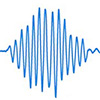| May 16, 2025 |
Researchers developed an optical method with record sensitivity to detect ultra-weak atomic motion, enabling new ways to study ultrafast processes in materials.
(Nanowerk News) A team of researchers from TU Dortmund University, the University of Paderborn, and the University of Nottingham has developed a new optical method to detect ultra-weak atomic motion. Their experiment performed in Dortmund has demonstrated unprecedented sensitivity of detection of atomic motion in crystals by exploiting light interference.
|
|
The findings, published in Nature Materials (“Polariton probing of attometre displacement and nanoscale strain in ultrashort acoustic pulses”), open new ways for studying ultrafast processes in materials.
|
|
Precise optical measurements rely on interferometers, where the beam probing a distance of interest interferes with a reference beam traveling a fixed path. This allows for assessing the path length difference of the two beams with high precision. A striking example is gravitational interferometers, which detect gravitational waves induced by a distant event in the universe, such as the collision of black holes.
|
|
To reach the desired sensitivity, the interferometer LIGO has a geometric length of 4 kilometers, which is increased to an effective 1120 kilometers by passing the beams through the interferometer multiple times. This allows measurements of relative changes of the interferometer arm lengths on the order of 10⁻²², corresponding to about 10⁻¹⁸ meters. That is an extremely small difference in length, about one-thousandth of the proton radius. This also requires a laser beam of 200 watts of power, amplified to 700 kilowatts in the resonator formed by the interferometer.
|
|
The international team of researchers from Dortmund, Paderborn, and Nottingham has now succeeded in interferometric measurements of atomic displacement of comparable absolute magnitude, using a so-called semiconductor superlattice – a periodic structure of nanometer semiconductor layers fabricated at the University of Paderborn – as an interferometer.
|
|
The decisive difference is that the effective size of such an interferometer is only on the order of 1 micrometer, and thus one billion times smaller than the gravitational interferometers. Moreover, the average laser power used is also one billion times smaller, on the order of only 1 microwatt.
|
 |
| The detection of the acoustic pulse travelling through the crystalline plate is enabled by the combination of optical interference and resonant properties of the semiconductor superlattice. (Image: Anton Samusev)
|
|
In the validating experiment, interferometric detection was also used to observe a distant event. A 100-femtosecond laser pulse – that is 10⁻¹³ seconds – heated a metallic film deposited on a crystalline plate, causing a temperature increase of 0.1 degrees and a thermal expansion of the film of less than 100 attometers, that is 10⁻¹⁶ meters.
|
|
“The acoustic wave generated by this ultrafast and tiny thermal expansion, which could not be detected by any previously known experimental technique, was confidently detected at the opposite side of the plate upon reaching the superlattice,” says Marek Karzel from Dr. Alexey Scherbakov’s working group at the Department of Physics, who performed the key experiment.
|
|
His colleague, Dr. Anton Samusev, points out the difference with the LIGO experiment: “Unlike the LIGO interferometer, the developed method does not detect individual events but requires multiple measurements to achieve a sufficient signal-to-noise ratio. However, this requirement is manageable in an experimental laboratory where measurements can be repeated millions of times per second, as opposed to astronomical events where the collision of two black holes occurs only once.”
|
|
This research opens up tremendous possibilities for material studies as well as quantum metrology involving single quanta of crystal lattice vibrations, known as phonons.
|


